Benoit Charbonnier
Invited: Neuromorphic architectures based on augmented silicon photonics platforms
Jul 07, 2024


Abstract:In this work, we discuss our vision for neuromorphic accelerators based on integrated photonics within the framework of the Horizon Europe NEUROPULS project. Augmented integrated photonic architectures that leverage phase-change and III-V materials for optical computing will be presented. A CMOS-compatible platform will be discussed that integrates these materials to fabricate photonic neuromorphic architectures, along with a gem5-based simulation platform to model accelerator operation once it is interfaced with a RISC-V processor. This simulation platform enables accurate system-level accelerator modeling and benchmarking in terms of key metrics such as speed, energy consumption, and footprint.
NEUROPULS: NEUROmorphic energy-efficient secure accelerators based on Phase change materials aUgmented siLicon photonicS
May 04, 2023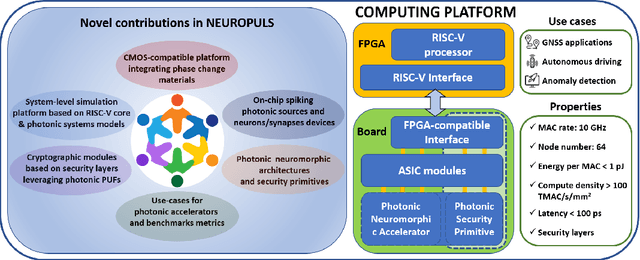
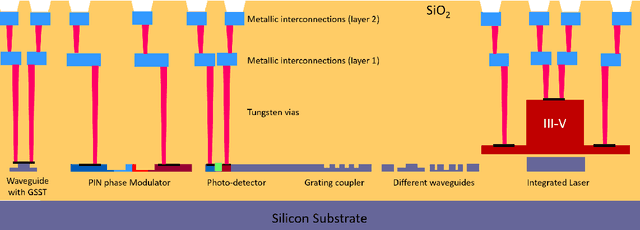
Abstract:This special session paper introduces the Horizon Europe NEUROPULS project, which targets the development of secure and energy-efficient RISC-V interfaced neuromorphic accelerators using augmented silicon photonics technology. Our approach aims to develop an augmented silicon photonics platform, an FPGA-powered RISC-V-connected computing platform, and a complete simulation platform to demonstrate the neuromorphic accelerator capabilities. In particular, their main advantages and limitations will be addressed concerning the underpinning technology for each platform. Then, we will discuss three targeted use cases for edge-computing applications: Global National Satellite System (GNSS) anti-jamming, autonomous driving, and anomaly detection in edge devices. Finally, we will address the reliability and security aspects of the stand-alone accelerator implementation and the project use cases.
Special Session: Neuromorphic hardware design and reliability from traditional CMOS to emerging technologies
May 02, 2023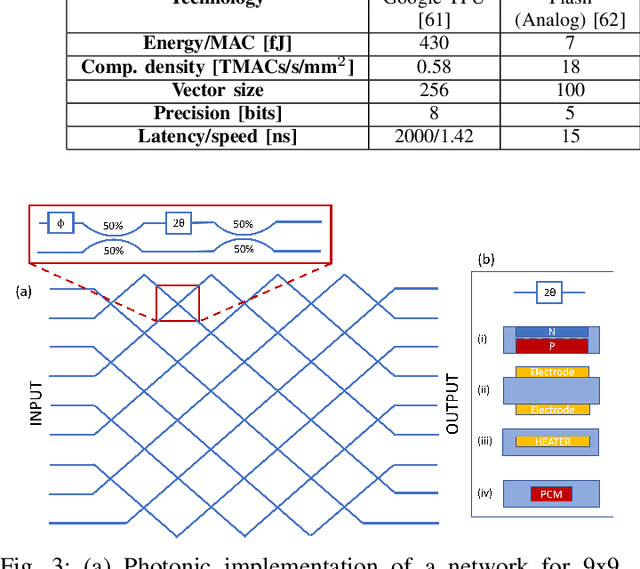
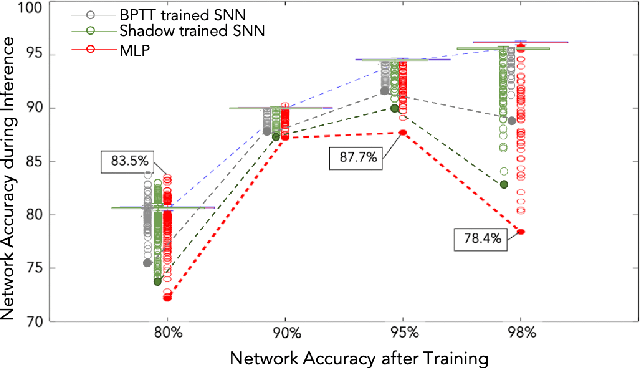
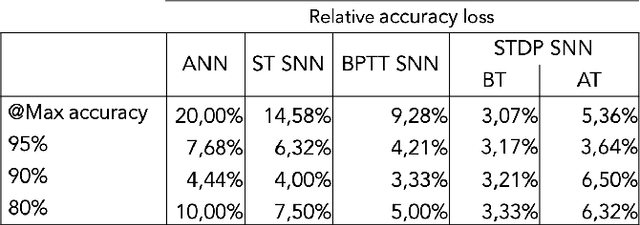

Abstract:The field of neuromorphic computing has been rapidly evolving in recent years, with an increasing focus on hardware design and reliability. This special session paper provides an overview of the recent developments in neuromorphic computing, focusing on hardware design and reliability. We first review the traditional CMOS-based approaches to neuromorphic hardware design and identify the challenges related to scalability, latency, and power consumption. We then investigate alternative approaches based on emerging technologies, specifically integrated photonics approaches within the NEUROPULS project. Finally, we examine the impact of device variability and aging on the reliability of neuromorphic hardware and present techniques for mitigating these effects. This review is intended to serve as a valuable resource for researchers and practitioners in neuromorphic computing.
 Add to Chrome
Add to Chrome Add to Firefox
Add to Firefox Add to Edge
Add to Edge